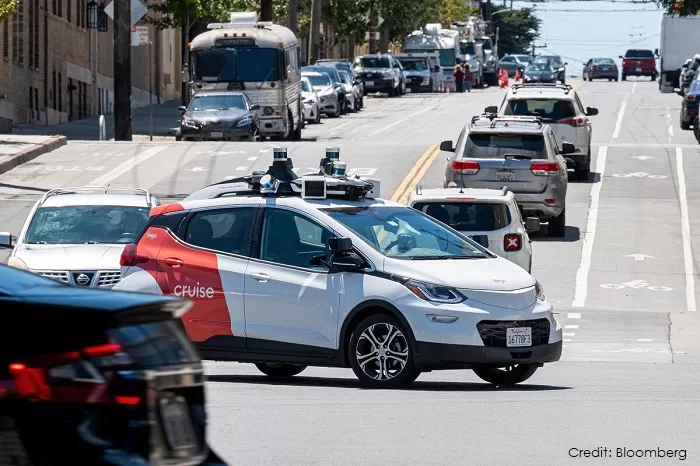Auto
Can Robotaxis Transform the Way We Travel? Exploring the Future of Self-Driving Cars

- Robotaxis promise enhanced safety, reduced traffic congestion, and improved accessibility by leveraging advanced AI and sensor technology.
- Major challenges include technical complexities, public skepticism, and the need for robust regulations and infrastructure improvements.
- Successful adoption will require ongoing innovation, rigorous testing, clear regulations, and increased public awareness.
The world of transportation is about to undergo a significant transition, and robotaxis are at the vanguard of this transformation. These self-driving vehicles, which use advanced artificial intelligence and cutting-edge sensor technologies, have the potential to transform how we travel. But can robotaxis genuinely accelerate the future of autonomous driving? Let’s look at the potential advantages, problems, and future prospects for this unique technology.
The Promise of Robotaxis
Robotaxis provide a number of advantages that potentially revolutionize our commuting experience. Here’s a closer look at why they’re so exciting:
- Enhanced Safety: Human error is a major cause of traffic accidents. Robotaxis, with its precise and consistent operations, has the potential to dramatically eliminate errors. With advanced AI and sensors, these vehicles can make split-second judgments and react to changing driving circumstances, potentially making our roads safer.
- Reduced Traffic Congestion: Robotaxis could assist reduce traffic congestion by optimizing routes and eliminating idle time. This efficiency not only results in shorter travels, but also in lower fuel usage, which can help the environment.
- Improved Accessibility: Robotaxis provide new levels of independence to people with impairments or mobility issues. Without the need for a human driver, driverless vehicles can provide a convenient and dependable method of transportation, increasing overall accessibility.
Overcome the Challenges
Despite their potential, robotaxis face various challenges before becoming a ubiquitous sight on our roadways.
- Technical Difficulties: Creating completely autonomous vehicles is no small task. To ensure that these vehicles can safely negotiate a variety of road conditions, interact with pedestrians, and make quick choices, AI and sensor technologies must be advanced.
- Public Trust: Many individuals remain suspicious of self-driving technologies. Gaining public trust will necessitate thorough testing and open discussion regarding the reliability and safety of robotaxis.
- Regulatory and Infrastructure Issues: The effective integration of robotaxis into our transportation network is contingent on clear legislation and supported infrastructure. This includes improving road infrastructure to handle self-driving vehicles and developing through regulatory frameworks.
The Path Forward
To achieve the maximum potential of robotaxis, various steps must be taken:
- Continued Innovation: Continuous research and development are critical for enhancing AI and sensor technology. Investing in these areas will help to improve robotaxis capabilities while also addressing current constraints.
- Rigorous Testing: Comprehensive testing in a variety of real-world scenarios is required to assure the safety and reliability of robotaxi systems. This will assist to boost confidence among users and regulators alike.
- Regulatory Development: Clear and uniform regulations will serve as a framework for robotaxis operation. This will help to address legal and safety concerns while also facilitating the technology’s widespread adoption.
- Public Education: Raising public knowledge about the benefits and safety of self-driving cars will be critical in overcoming skepticism and encouraging adoption.
- Infrastructure Upgrades: Improving road infrastructure with improved traffic lights and communication systems will help robotaxis integrate into our transportation network.
The Future of Transportation
Robotaxis have the potential to transform the transportation business. They could provide safer, more efficient, and more accessible transportation options, dramatically increasing our standard of living. However, attaining this vision will necessitate a coordinated effort by technology companies, policymakers, and citizens.
As businesses like Uber and Waymo advance robotaxi technology, and Tesla prepares to debut its own self-driving vehicle, the path to mainstream usage becomes clearer. The voyage may be long and complicated, but the promise of robotaxis provides a fascinating insight into the future of automated driving.
To summarize, while robotaxis are not yet prevalent, their development is a significant step toward the future of transportation. Robotaxis has the potential to shape the future of automated driving if it continues to innovate and focuses on overcoming existing hurdles.

















































